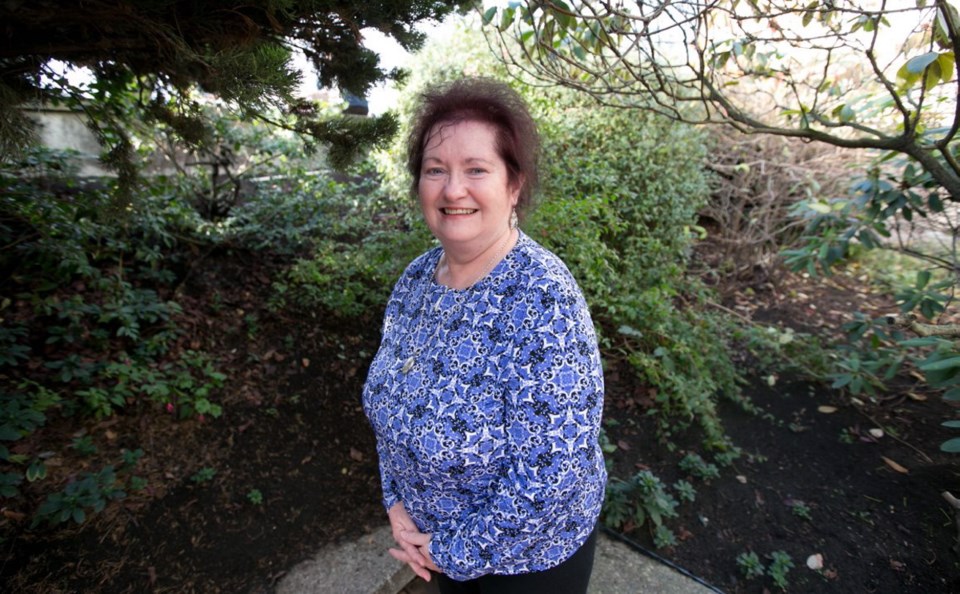When Doreen Gee worried — about her health or whether her stove was turned off or doors locked — it was never enough just to check.
Obsessive compulsive disorder, OCD, meant when Gee’s doctor assured her everything was fine, she wouldn’t believe it.
When it came to her stove or the door, one look was never enough to check if the burner was off or the apartment locked.
“Most people will go and check the knobs on the stove to make sure they are off,” said the 62-year-old James Bay woman. “But I will check them over and over and over again,” sometimes more then 50 times.
Gee, a magazine writer, said she now takes medication. And she has learned to manage her symptoms with behavioural modification.
This means disrupting the endless series of checks and re-checks that resulted from her anxieties over such things as an apartment fire or a break-in.
For example, when she started to feel anxious about whether her apartment’s stove was off, Gee would refuse to engage in the series of checks and re-checks. In therapy she learned the entire exercise was a consolation ritual, one she had learned to make the anxiety less painful.
Instead of consoling herself with a pointless ritual, she would check the stove once. Subsequently, she would simply tell herself, “it’s off.” Gee would then endure the often-agonizing anxiety.
“I had to experience this horrendous anxiety,” Gee said. “I couldn’t react to it and basically had to let myself just feel the anxiety.”
Eventually, it paid off.
“One day, I found after I had withstood the anxiety, that every time I had the anxious thoughts, the anxiety was just a little bit less.
“I’ve learned to manage OCD so it does not control my life anymore,” she said. “I refused to let the illness define me.”
Victoria psychologist Eric Ochs, who works in private practice and with the Island Health anxiety clinic, said OCD is a recognized and diagnosable mental illness.
It is characterized by excessive, unfounded anxieties over things such as disease, a fire at home, and ritualistic, compulsive behaviour, such as endless hand-washing or, like Gee, checking the stove again and again.
Ochs said estimates of the number of people with OCD vary. At the low end, health-care professionals say between one and two per cent of the population are living with diagnosable OCD.
However, some mental-health specialists say the condition is best considered as a spectrum. Included are other aberrant behaviours such as compulsive hoarding, in which a person may fill an entire apartment with junk they collect and can’t bear to discard.
When OCD is considered as a spectrum of disorders, estimates rise to between five and six per cent of the population, Ochs said.
But for the one to two per cent of the population with diagnosable OCD, the effects are devastating. People with OCD endure anxieties that make it impossible to leave their homes or interact with others.
“It can be as bad as any mental illness can get,” Ochs said. “It vies with schizophrenia and other serious and persistent mental-health diagnoses for the impact it can have on people’s lives.”
Typically, the anxieties and the compulsive behaviour become a serious issue for young adults. This is the time it is often first diagnosed. Afterward, the cost to careers, productivity, families and society at large become enormous.
“Put it this way: You cannot afford not to treat this,” Ochs said. “It costs too much to just leave it.”
He said medication has shown to be effective. Also productive is counselling in cognitive behaviour therapy, in which a patient is helped to recognize dysfunctional thinking and change behaviours accordingly. Another approach is exposure and response prevention, in which a patient learns to confront an anxiety and discontinue the patterned responses.
Ochs said counselling can be delivered in a group setting, to make it more cost-effective. And studies have shown effects can be as good as one-on-one sessions.
He also said a combination of approaches can be used in the treatment.
“It gets complicated because everybody is different. Everybody has a different capacity to tolerate distress,” Ochs said.
“People have different supportive, or not-so-supportive thinking processes, habits of thought that might make it harder or easier to handle.
“Even the family context can be helpful, or not. Will other people in a patient’s life help them make arrangements around the disorder, or will they even acknowledge it?”
Finally, Ochs said he is uncomfortable when people joke about it, saying they or someone else is “a little compulsive” or “so OCD.”
“I can understand why some people might say that; after all, we all have some obsessive, even compulsive tendencies,” he said. “It’s part and parcel of the human condition.
“On the other hand, for a person who has the diagnosis of OCD, it can sound like it’s being trivialized,” he said.
“The truth is, OCD is not something to be laughed at. You wouldn’t wish this on your worst enemy.”
